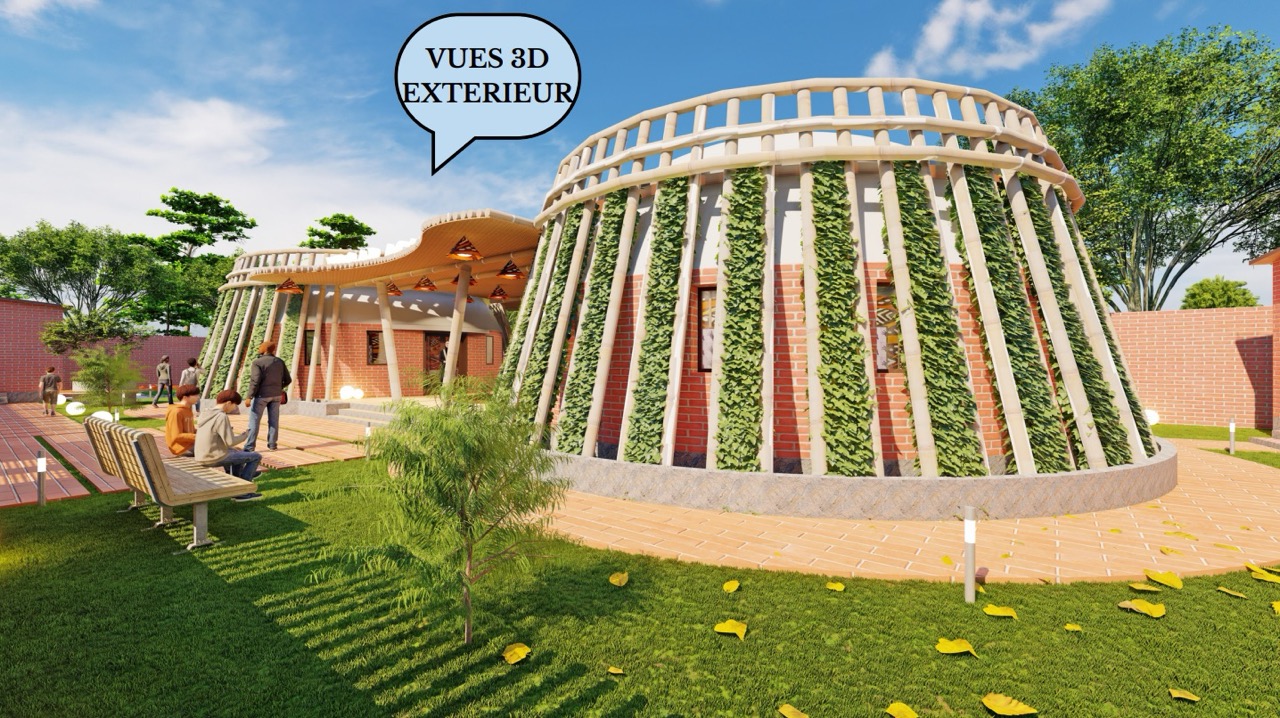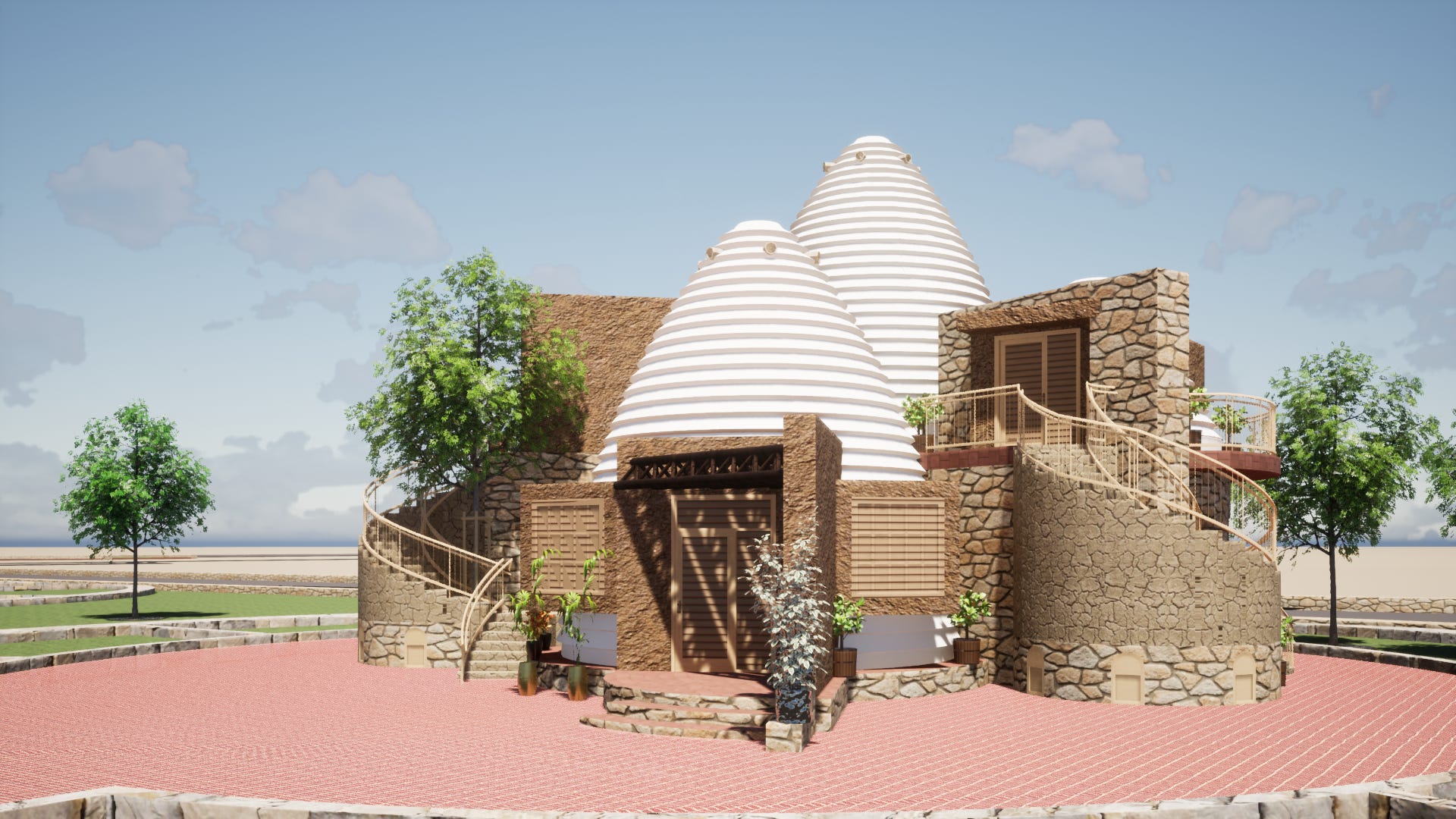This newsletter is written to be read, enjoyed, and shared. If you reply to it, we will respond back.🌞
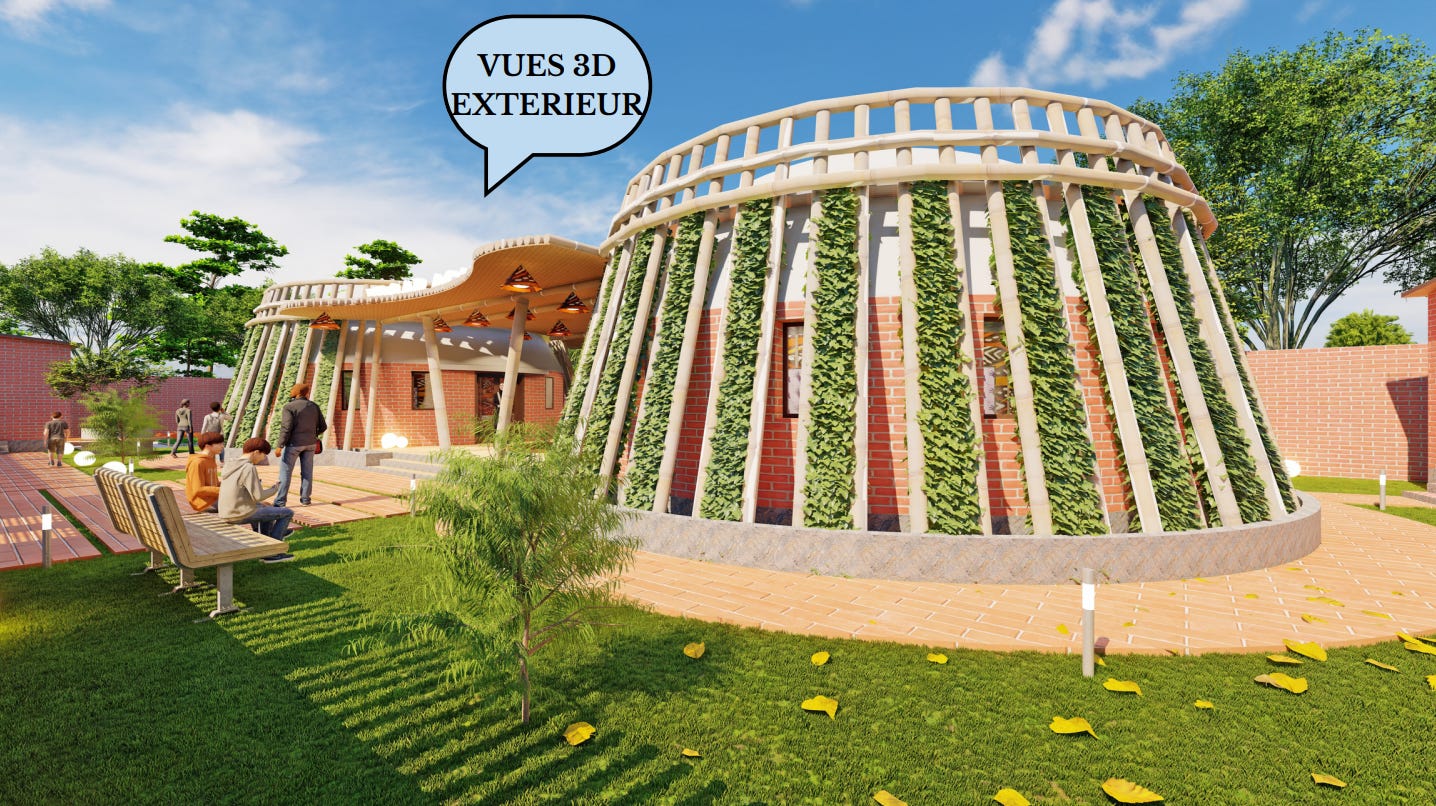
This 8th newsletter from the Innovation Lab: Regenerative Futures in the Sahel, is packed with exciting learning moments and impressive goal achievements from learners in the Regenerative Architecture and Extended Reality cohort. During this second month of the cohort's second phase, the learners are getting closer to achieving their various goals. Read on to learn about these exciting moments! 🎉
Everything reported below happened during the month of February 2024 😉.
Some highlights from the second phase of the Regenerative Architecture & XR training 🚀
The curriculum for the second phase of the cohort includes three workshops: Architectural Design, Agri-Tecture Practice, and Immersive Tech. In the following, we'll share with you the dynamics and progress of each of these workshops.
Architectural Design Workshop : The final presentation of the learner’s regenerative architecture prototypes 📐
February was the last moment for learners to finalize their designs for Sahelian regenerative architecture prototypes. After more than thre months' work on these prototypes, and numerous workshops with the cohort's mentors, the learners finalized their designs and present them to the Kabakoo Academies learning community, and a jury made up of the Kabakoo team and mentors.
Participants in this event and presentation of the learners' designs highlighted the remarkable progress made by the learners, and the important social, economic, environmental and climate regenerative thinking behind each architectural prototype project. The translation of these reflections into architectures responding to the challenges of housing, learning spaces or innovations in terms of building materials is also a task successfully accomplished by the learners. Their creative prototypes represent contemporary architecture, responding to today's needs, while drawing on endogenous architectural cultures, in terms of forms, construction techniques, architectural language and its cultural symbolism and identity. Achieving this highdigenous mix was the learners' main challenge.
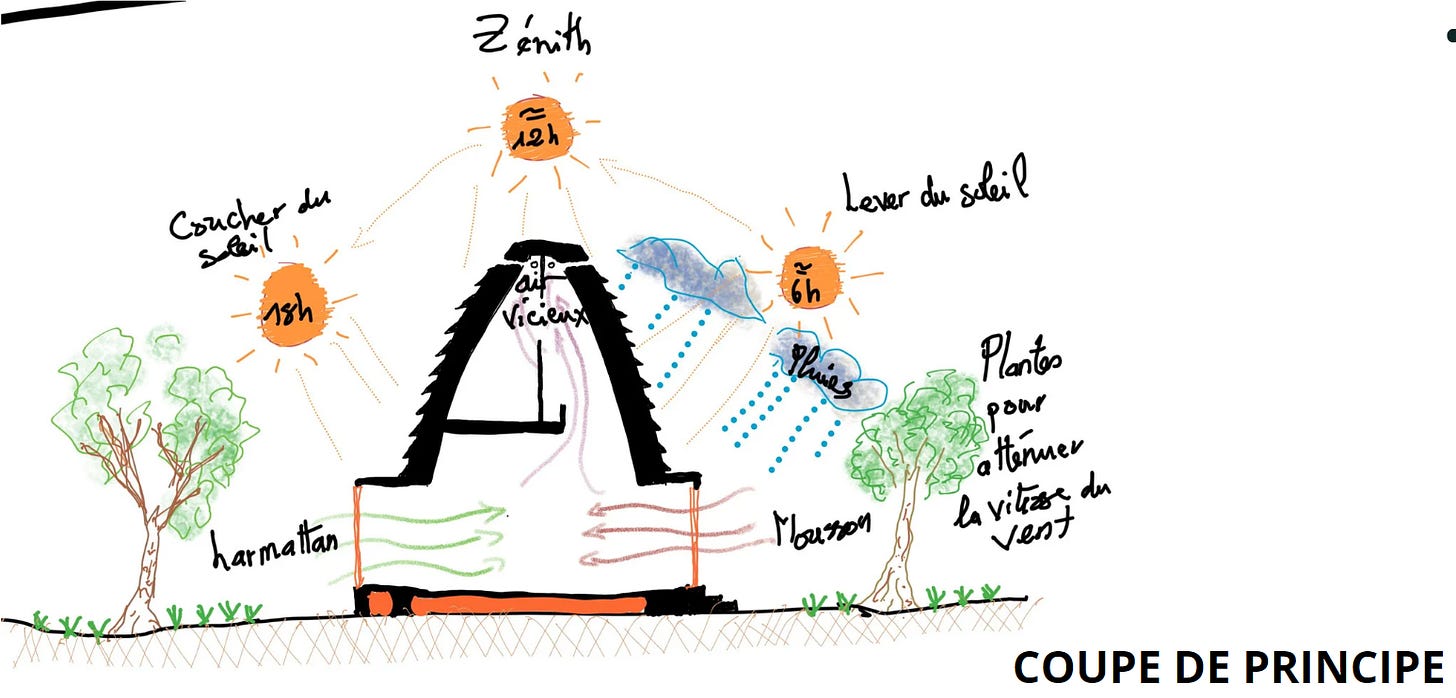
Architect-mentors Mamadou Koné, Elvira Pietrobon and Achref Ghrib applauded the quality of the learners' architectural work, who will now tackle other important challenges such as technical feasibility studies, quantity and cost estimations, and so on.
Agri-Tecture Practice Workshop : Completing the bamboo experimental camping pod’s structure and exploring urban agriculture techniques 🎋
During the month of February, the learners, guided by their mentors, made impressive progress in their regenerative architectural practices! The bamboo structure of the experimental camping pods is 100% complete! Making this structure is a super-important achievement, brimming with apprenticeship around the specifics of the local bamboo with which the learners worked, but also the methods and techniques of its assembly, etc
For all the learners taking part in these hands-on workshops, it was their first time working with bamboo.
And yet, the two-level structure with its overhanging roof and canopies stands firm and sturdy!
The learners are also in the process of documenting and capitalizing on their learning from these practical experimentation workshops, in order to facilitate transmission to the Kabakoo learning community and beyond.
Moreover, the progress in experimenting with urban/architectural agriculture is just as impressive! At the Bamako co-learning space, learners have tried out and implemented a number of off-soil urban farming techniques. These techniques are also highdigenous, taking their inspiration from Dogon farming techniques such as Zai, but also from other contemporary off-soil techniques. The aim of these workshops is to discover various techniques and invent innovative solutions for integrating agriculture, nature, and greenery into architecture, bringing it to life and thereby increasing its positive regenerative effects on the environment and climate.
For the next stages of their experiments, the learners will be looking at other innovative techniques for urban/architectural agriculture, such as hydroponics, green walls and roofs, etc.
Immersive Tech Workshop : Starting the learning and the development of immersive regenerative architecture experiences 👓
After a month full of exciting meetings and discussions with African communities developing and promoting immersive technologies in Africa, and having finalized their Sahelian regenerative architecture prototypes, the learners are now ready to start learning the tools they need to develop virtual reality experiences based on their architectural prototypes.
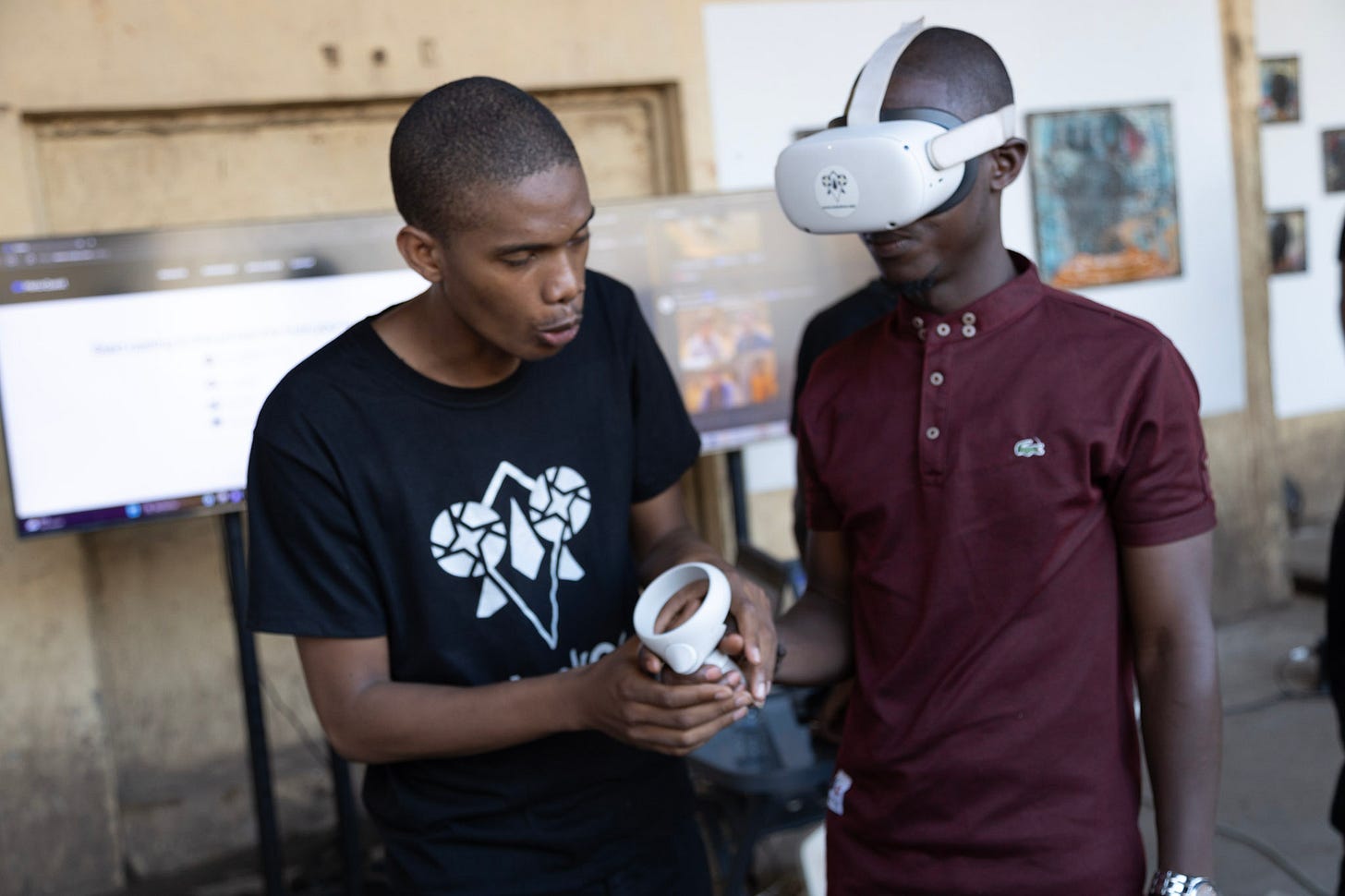
During the month of February, guided by Seydou Ba, a VR-expert, the learners began to learn how to use Unity. By end March, learners should be well advanced in their learning and ready to present their prototypes in virtual reality.
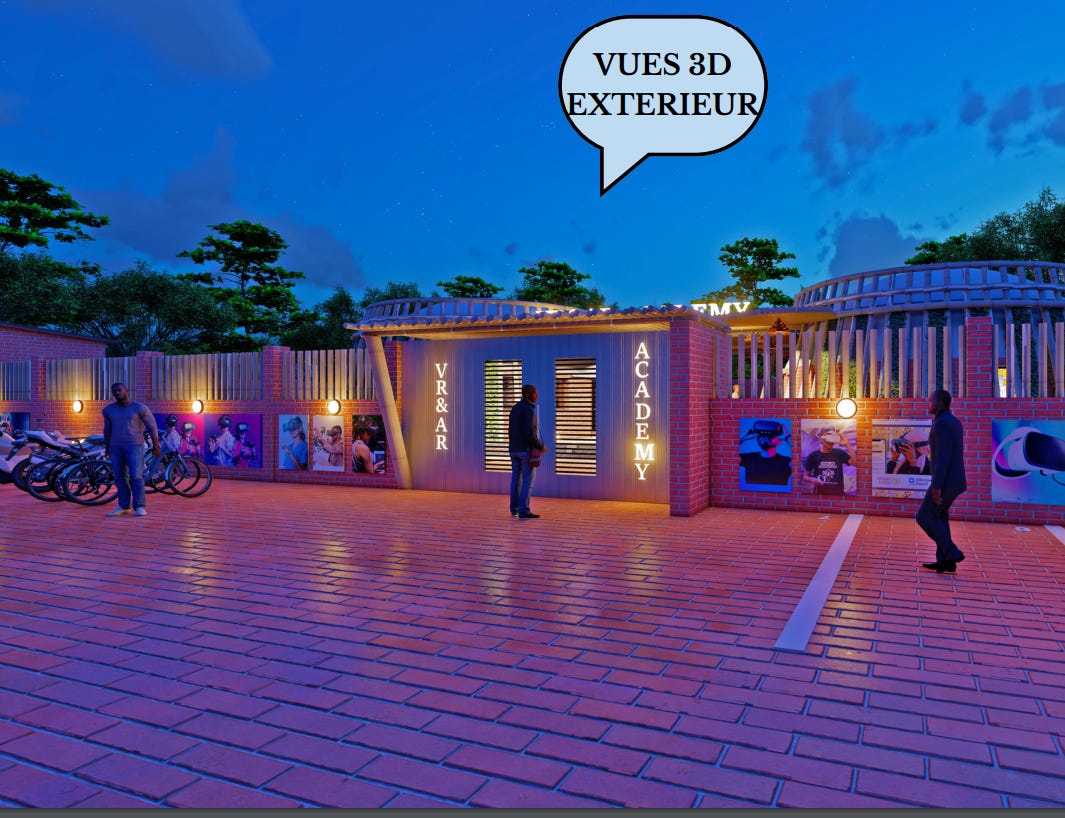
📢 Engaging with the community, building the movement 🛠️
Wednesday’s Masterclass Ritual: An entrepreneurial adventure in earth construction materials: Terre Sahel
For this first masterclass meeting of February, the learners and members of the Kabakoo community met Amara Golfa, architect and founder of Terre Sahel, a compressed earth brick factory in Bamako. This meeting is part of a series that we organize as part of the activities of the Innovation Lab, in order to meet and learn from Sahelian entrepreneurs who have invested and innovated in the field of regenerative construction. Thus, the meeting was a remarkable opportunity for Amara to share his inspiring entrepreneurial journey with the learners, his various experiences he had in England or Indonesia, and his fascination with earth as a construction material.
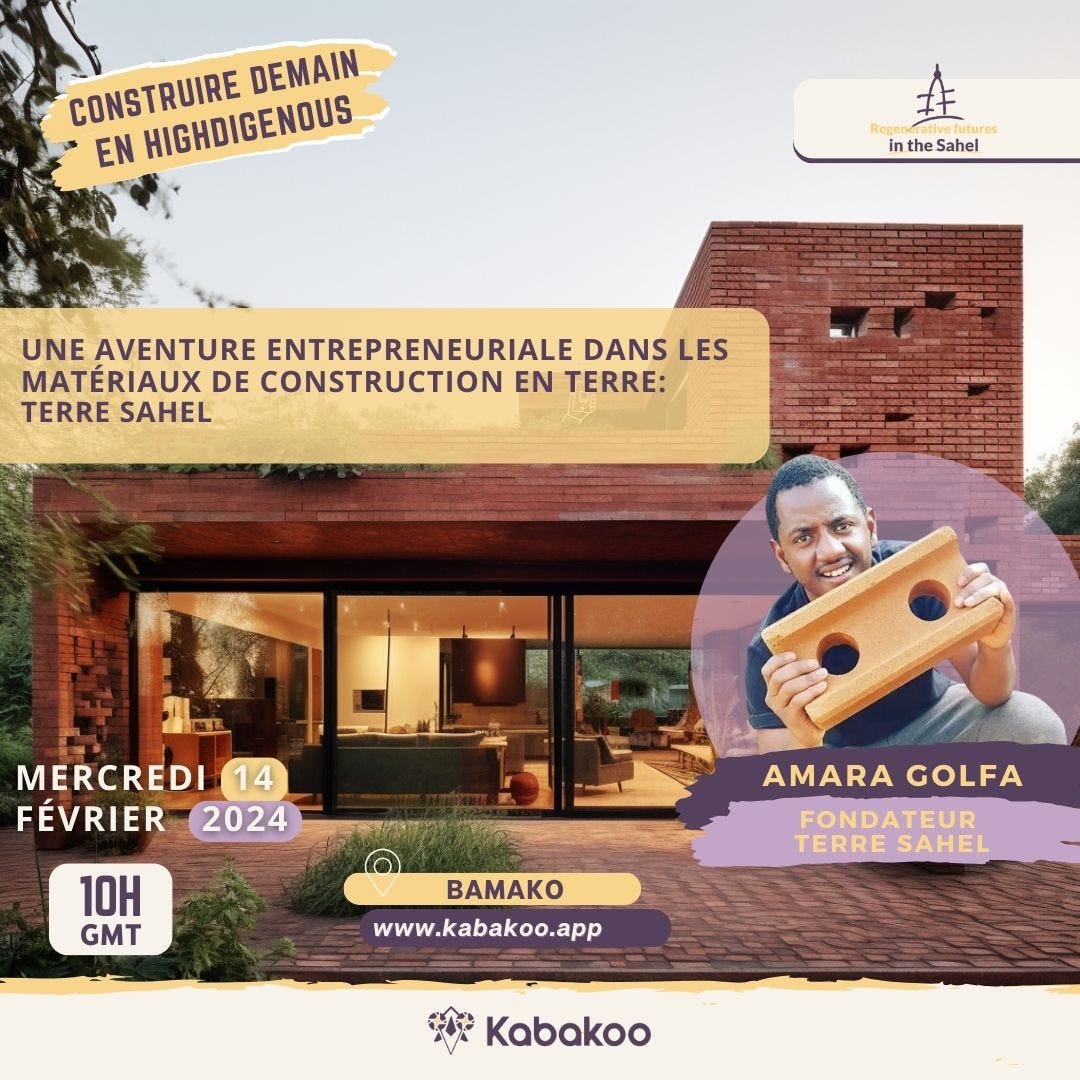
Amara explained that the absence of specific courses on endogenous architecture in Africa, during his university career and that discussions with his classmates, led him to question a lot about the reasons for this absence.
This was thus a motivation for him to rediscover the architectural cultural wealth of the Sahel, and to take the initiative to innovate from this. This was the inspiring story that Amara shared with the learners about the founding of his company. The learners were very interested in this journey, but also in the difficulties encountered along the way, and in the current state of his company, particularly in terms of market, demand, supply, competition, and customers. This kind of meeting shows the learners the example, and encourages them to launch their own entrepreneurship around regenerative architecture.
Another masterclass: Open-source cartography: challenges and potential
Imagining the regenerative futures of Sahelian cities requires a multi-scalar vision and reflection. For this, we organized a meeting-masterclass, with Noemi Romano, cartographer and full stack software engineer around the issues and potentials of open-source mapping. It is a first introduction for learners and the Kabakoo community to the world of mapping and above all to how they can use it to map the issues and potentials of the Sahelian city with the idea of making them more accessible and understandable for everyone.
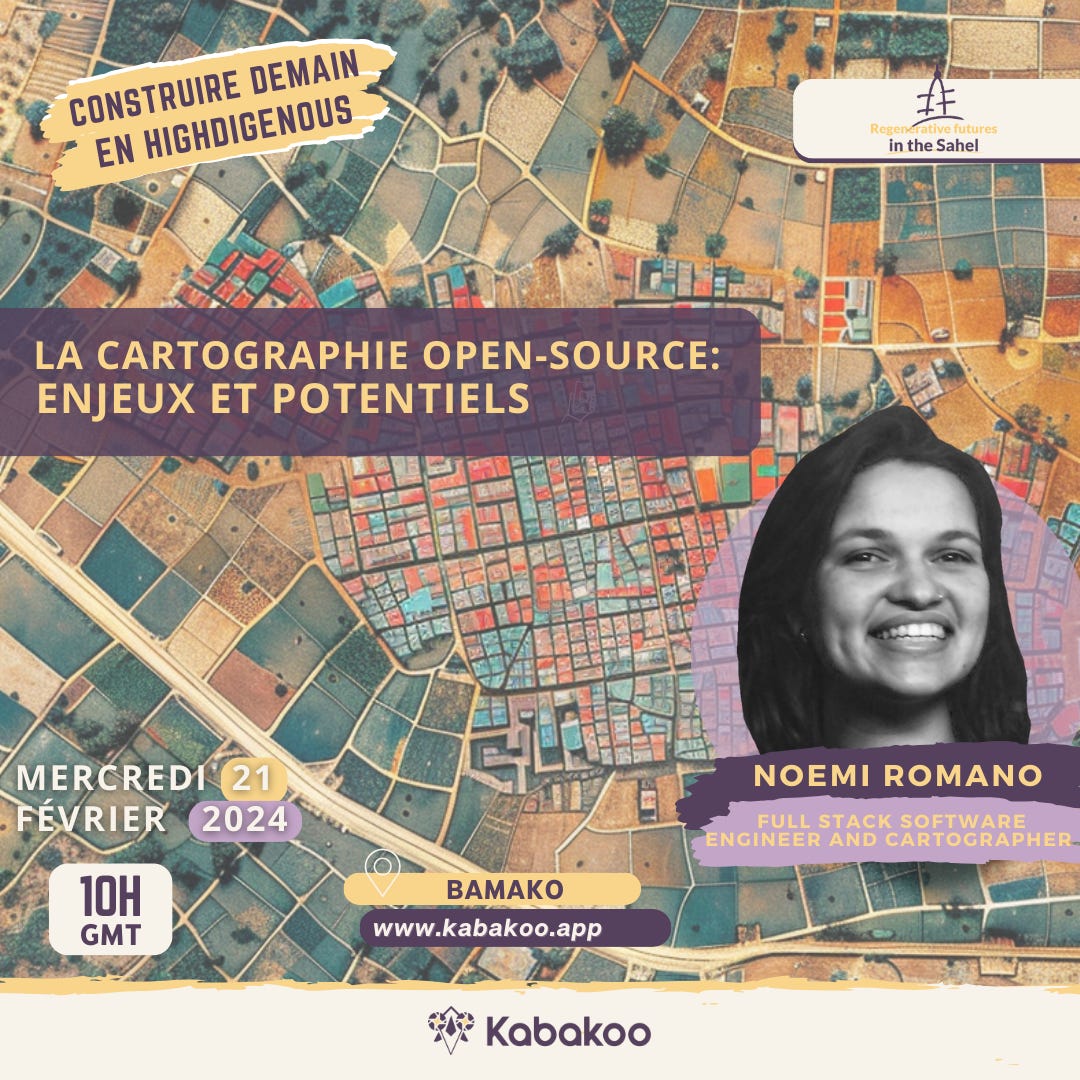
The discussion was extremely rich and covered multiple facets of mapping, its open-source tools, data collection and sharing, but also possible biases and how to take them into account. Noemi was particularly pleased with the motivation of the learners and the questions and topics addressed.
It was an important opportunity to understand what role open-source mapping could play in democratizing the goals of the Innovation Lab and catalyzing work on the imaginaries of the Sahelian city of tomorrow.
More masterclass: Vegetal fibers, from handicrafts to architecture!
For the last masterclass meeting of the month, we met Samba Sangaré, a craftsman based in Mali, expert in the making of furniture and various architectural elements in vegetable fibers, rattan and bamboo. Samba had already accompanied the learners of the cohort during their practical experiments with bamboo, and transmitted his knowledge to them to succeed in assembling bamboo with vegetable fibers in a solid way.
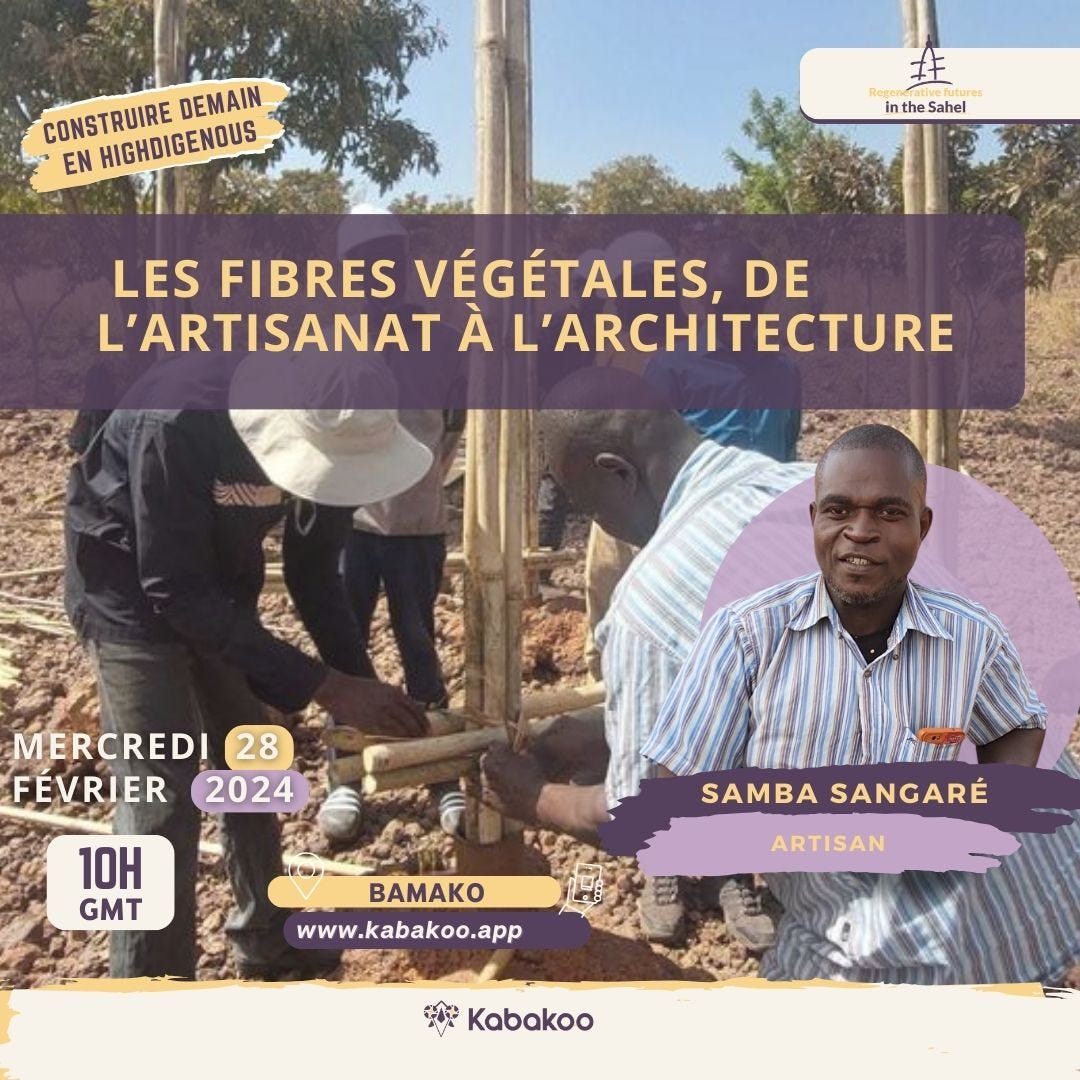
The masterclass was a very important opportunity to understand Samba's journey, his motivations and his vision about the evolution of this field and its potentials for regenerative architecture. The session ended with a practical demonstration, during which Samba showed other weaving and assembly techniques with vegetable fiber that can be used in architecture.
🎉 Upcoming Teasers:
During the month of March, learners will complete the second part of the cohort, achieving essential results, notably the design of immersive experiences from their architectural prototypes and the finalization of the experimental co-construction of the camping capsule, including cob walls (earth, straw and bamboo) and thatched roofing! So, stay tuned for these exciting results!
With Love & Hope from Bamako 💜💛


